-
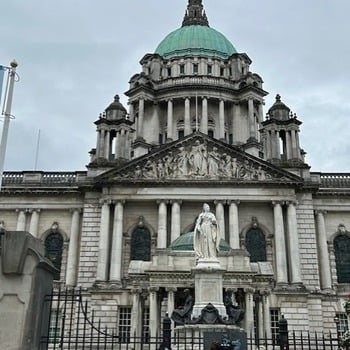 July 8, 2025By Bishop Gerald Kicanas
July 8, 2025By Bishop Gerald Kicanas
Though I am away in Northern Ireland and Northern England for vacation I could not help but send you a few photos of these magnificent places. As mentioned, I am traveling with a dear friend of mine from Chicago, Fr. Gus Belauskas, who teaches Philosophy on the faculty of the University of St. Mary of the Lake in Mundelein, Illinois.
We arrived in Belfast City, Northern Ireland where “The Troubles,” as it was referred to took place in the 1960s and 1970s. It was a period of time in which the Catholics, those wanting a United Ireland fought with the Protestants and the Unionist who wanted to remain connected to England. While it involved religion it was more about territory and sovereignty. Many innocent people lost their lives, and everyone was affected by the violence. The history is complex with varied narratives, each blaming the other. Ian Paisley, a Presbyterian minister fostered division by calling Catholics, “vermin.” The divisions and hatred go back centuries but were finally resolved with the Good Friday Accords in 1998 which were brokered by the US establishing a new power sharing government. When people are divided and politicians foment division violence often follows. Our country can learn from Northern Ireland.
the 1960s and 1970s. It was a period of time in which the Catholics, those wanting a United Ireland fought with the Protestants and the Unionist who wanted to remain connected to England. While it involved religion it was more about territory and sovereignty. Many innocent people lost their lives, and everyone was affected by the violence. The history is complex with varied narratives, each blaming the other. Ian Paisley, a Presbyterian minister fostered division by calling Catholics, “vermin.” The divisions and hatred go back centuries but were finally resolved with the Good Friday Accords in 1998 which were brokered by the US establishing a new power sharing government. When people are divided and politicians foment division violence often follows. Our country can learn from Northern Ireland.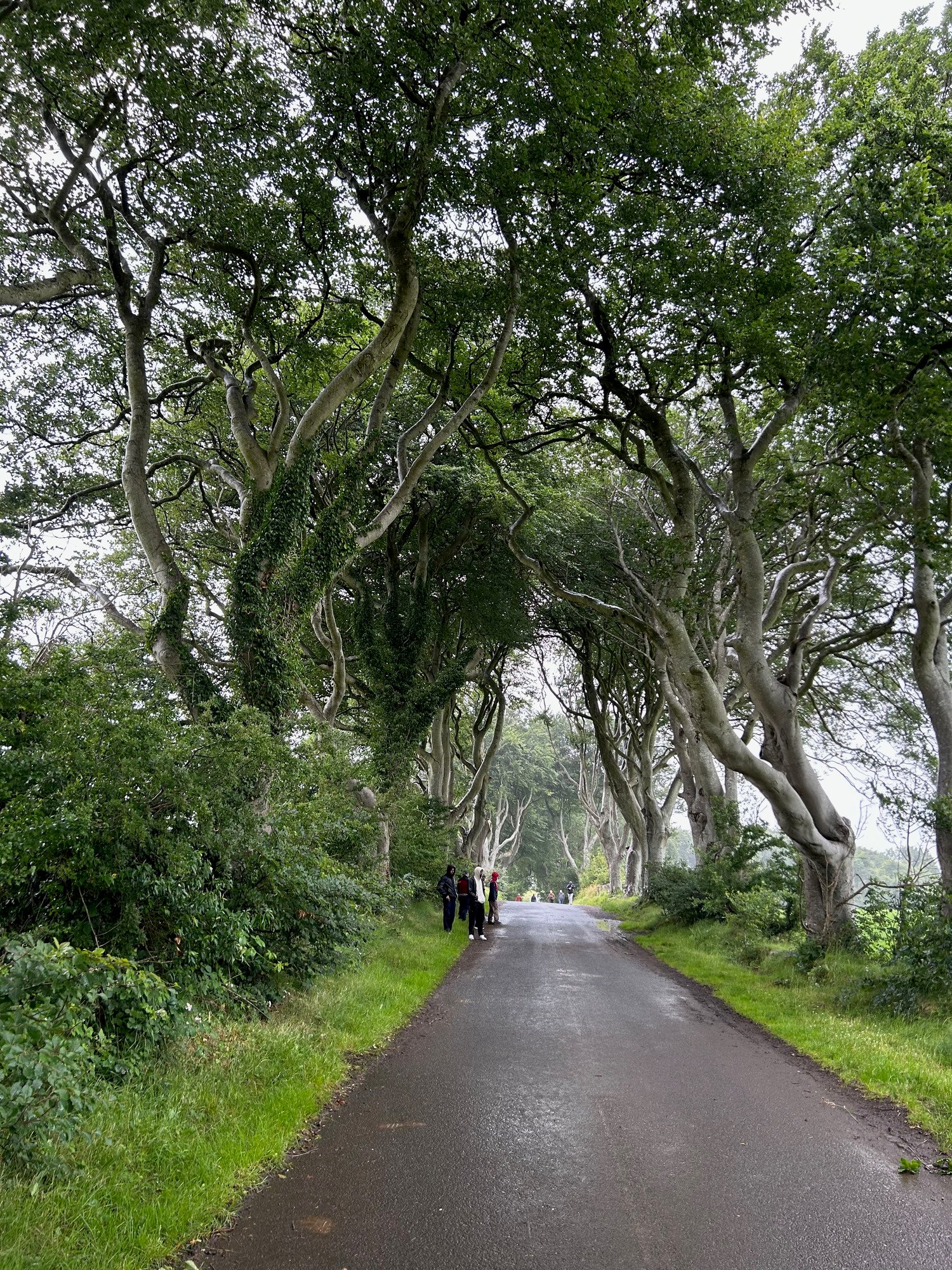
A trip to the Giant’s Causeway, where some of the Game of Thrones television series was filmed, is a must. It is known as the eighth wonder of the world. It is one of the five most spectacular drives. The Causeway is a UNESCO World Heritage Sites. The ancient stones formed by the forces of nature are astounding. You can climb the stone pillars, some of which are several feet high. We watched as the younger people glided over the stone pillars leaping from one to another. We stopped by the “Stone Hedges” a walkway of overarching trees where some of the Game of Thrones was filmed.
The stunning city hall is at the center of Belfast. Its magnificent Baroque Revival building has been the seat of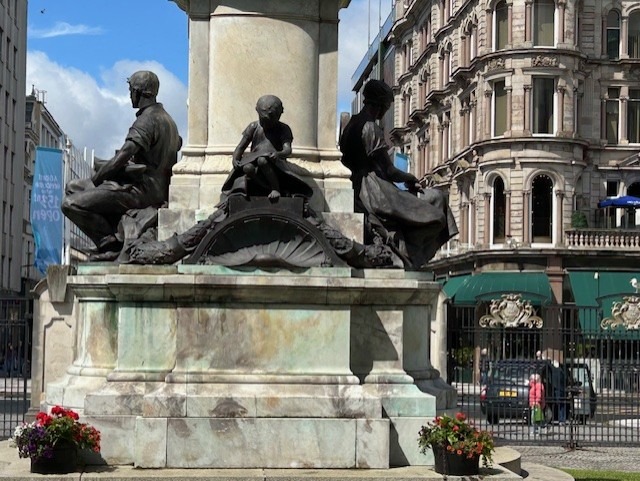 government since its beginning in 1906. In front of the hall is the statue of Queen Victoria the patroness of Belfast and three sculptures, one recognizing the importance of shipbuilding, the second linen production, and the final the importance of education to the people of Northern Ireland. Just outside the hall is a memorial monument to the people lost in the sinking of the Titanic in 1912. The Titanic was built in the shipyards of Belfast. Ship building, linen, and rope products were all big industries in Belfast although no longer. The statue of the woman holding a rin
government since its beginning in 1906. In front of the hall is the statue of Queen Victoria the patroness of Belfast and three sculptures, one recognizing the importance of shipbuilding, the second linen production, and the final the importance of education to the people of Northern Ireland. Just outside the hall is a memorial monument to the people lost in the sinking of the Titanic in 1912. The Titanic was built in the shipyards of Belfast. Ship building, linen, and rope products were all big industries in Belfast although no longer. The statue of the woman holding a rin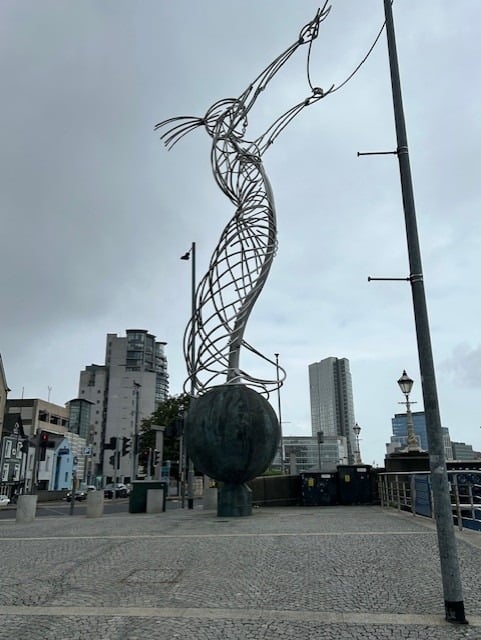 g is called the Beacon of Hope, a striking piece of public art that champions the resilience and regeneration of the people and the city. The first Catholic Church in Belfast called St. Mary’s Church was built through contributions made by several Scottish Presbyterian Churches. Like the Catholics, Presbyterians were considered outcasts by the English and so they felt affinity with the Catholics as the oppressed and helped each other. The youth holding a dove with two arrows robbing the dove of peace its life represents the Catholic and Protestant, the Nationalists and the Unionists whose bitter divisions caused the death of the Dove of Peace. Decades later pubs are everywhere throughout the city with places to gather and enjoy company and vibrant conversation.
g is called the Beacon of Hope, a striking piece of public art that champions the resilience and regeneration of the people and the city. The first Catholic Church in Belfast called St. Mary’s Church was built through contributions made by several Scottish Presbyterian Churches. Like the Catholics, Presbyterians were considered outcasts by the English and so they felt affinity with the Catholics as the oppressed and helped each other. The youth holding a dove with two arrows robbing the dove of peace its life represents the Catholic and Protestant, the Nationalists and the Unionists whose bitter divisions caused the death of the Dove of Peace. Decades later pubs are everywhere throughout the city with places to gather and enjoy company and vibrant conversation.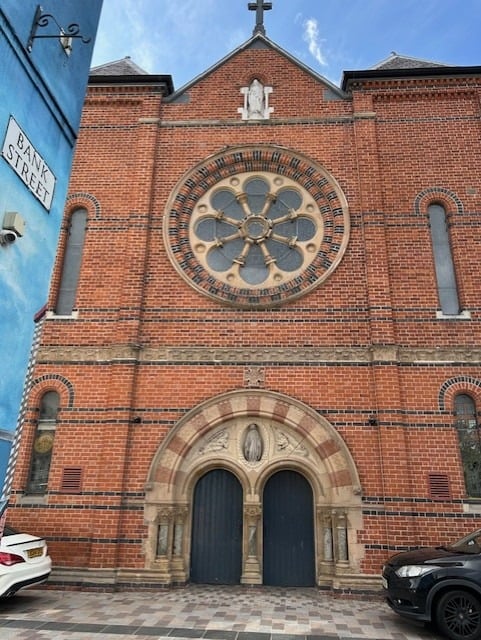
The weather is very different than our Arizona summers, for the brief reprieve, I am grateful. Thank you for your prayers, I look forward to being back in the desert with all of you again soon.
